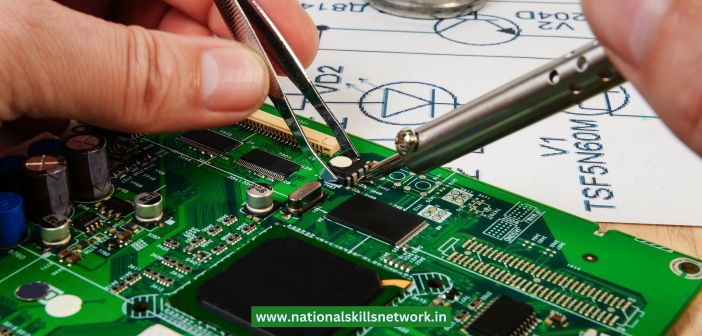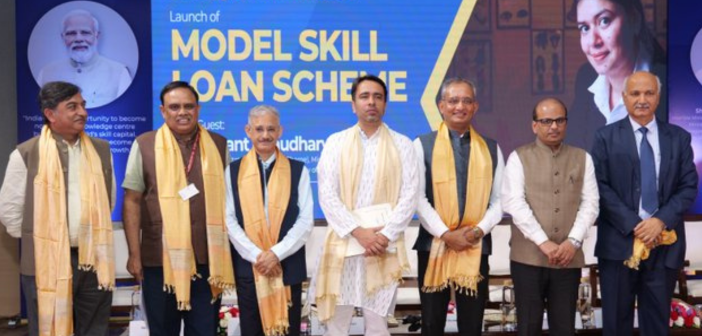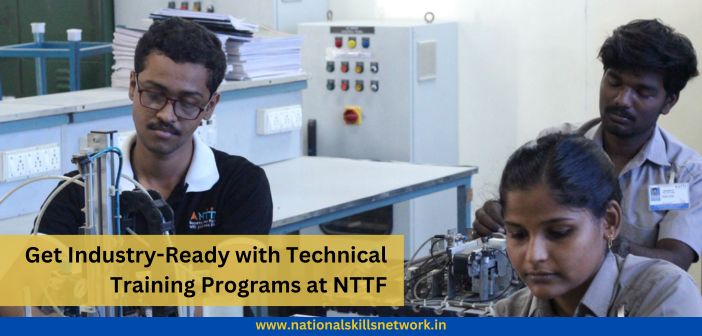“India aims to become a $300 billion electronics industry by 2025”, as stated by Shri Rajeev Chandrasekhar, Minister of State for Electronics and Information Technology. And the key to this evolution lies in skill development.
In the vast canvas of India’s technological aspirations, the vision for the future of electronics isn’t just ambitious; it’s a captivating journey towards transformation. Imagine a landscape where innovation is not just a buzzword but a driving force, where circuits hum with the rhythm of progress and pixels paint a portrait of the future we are crafting.
Embarking on this journey requires more than blueprints and prototypes; it demands a workforce sculpted by knowledge and honed by expertise. In this article, let’s delve into the current status, demands, and the vast potential that skill development holds for India’s electronic industry – a realm where dreams take the form of circuits and bytes, and talent is the currency of progress. As we navigate through this landscape, we’ll also explore the potential for jobs that this industry presents, opening doors to dynamic careers and innovative pathways for the skilled workforce of tomorrow.
Current Industry Landscape
In 2019, the Indian government revamped the National Policy on Electronics, signaling a shift towards an integrated approach. This approach focuses on core technology development, incentivizing capital expenditure, and promoting production scale through schemes like Production-Linked Incentive (PLI) and the Electronics Manufacturing Clusters Scheme. The Electronics System Design and Manufacturing (ESDM) sector has seen increased production in mobile phones and consumer electronics.
As per IBEF, India ranks second in digitalization among the world’s top 17 economies. The government targets making electronics goods a top export, aiming for $120 billion by 2026, a significant jump from the projected $15 billion in 2021-22. While electronics hardware manufacturing holds a key role in the “Make in India” and “Digital India” initiatives.
Skill Development Initiatives in the Electronics industry
According to a PWC report, on “India calling: Decoding the country’s electronics manufacturing journey and the way forward”, skill development stands as a pivotal pillar in the integrated approach adopted by the Government of India in the electronics sector.
The Electronics Sector Skill Council (ESSCI), aligned with the National Policy on Skill Development and Entrepreneurship (2015), has trained 1.6 million candidates in sub-sectors like semiconductors, consumer electronics, and IT hardware.

Schemes for Electronics Manufacturing
To boost domestic manufacturing, the government introduced schemes showcasing India’s commitment to technological advancements, such as,
- Production-Linked Incentive (PLI)
- Scheme for Promotion of Manufacturing of Electronic Components and Semiconductors (SPECS)
- Modified Electronics Manufacturing Clusters Scheme (EMC 2.0)
- Incentives for design, semiconductor fabs, and e-waste management
Explore these schemes and more on the ELCINA portal, where industry insights and advancements are detailed.
Job Potential and Skill Requirements in India’s Electronic Industry
Amid the dynamic landscape of India’s electronic industry, ESSCI released a report in 2023 called “A study to identify the skill requirement and job potential assessment in electronics industry in India” which meticulously identifies skill requirements and job potential in four key sub-sectors such as,
- Semiconductor and Components
- Electronics Manufacturing Services
- Hearables and Wearables
- Circularity/E-Waste
The study aims to estimate manpower requirements, identify industry trends, and map current and future skill requirements to support industry growth.
Qualification Pack and National Occupational Standards (NOS)
ESSCI plays a pivotal role in shaping job roles through Qualification Packs (QPs), which are sets of National Occupational Standards (NOS) aligned with the National Skills Qualifications Framework (NSQF). These QPs are essential in the electronic industry, ensuring competency and outcome-based training and assessment for various job roles.
These Qualification Packs, tailored to specific roles, serve as the backbone for creating courses, curricula, and content, while also driving comprehensive assessments. They provide a structured framework for skill development, ensuring that individuals entering roles such as Smartphone Assembly Technician, Electronics Machine Maintenance Executive, Electronic Hardware Assembly Operator, Mechatronics Maintenance Specialist, and more are equipped with the necessary skills.
Incorporating levels three to seven, these Qualification Packs become a vital tool for standardizing skill levels across the industry. This standardization not only enhances the quality of the workforce but also aligns with the evolving needs of the electronic industry, fostering a skilled and adaptive workforce ready to contribute to the sector’s growth and innovation.
For a detailed overview of the Qualification Pack and National Occupational Standards (NOS) pertaining to various job roles, kindly refer to the link provided by ESSCI here – https://essc-india.org/qualification-packs.php.
Also read: Electronics Industry in India: Emerging Technologies, Skill Training and Opportunities
India’s electronics industry is driven not just by numbers but by the people propelling innovation. As India strives to become a global hub for Electronics System Design and Manufacturing, the emphasis on skill development is crucial. Through visionary policies, collaborative industry efforts, and a commitment to nurturing talent, India is set to meet the demands of the electronic industry and pave the way for its future.
To keep up with the recent updates from NSN, please follow our WhatsApp channel – https://whatsapp.com/channel/0029Va9EpiI9Gv7Q5RTN5I2E












